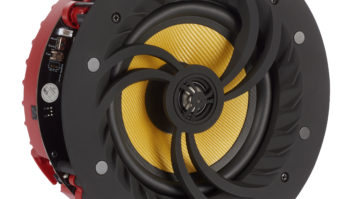NEW YORK – The world of high-end audio was built on such products as stereo integrated amps and preamps, electrostatic speakers, five-way speakers, powered subwoofers and high-performance headphone amps.
But the market segment continues to evolve with a growing array of new product types ranging from U S B DAC/amps to portable USB DAC/ amps and two-channel CD/ SACD players with music streaming.
Some of the new types include Arcam’s two-channel CDS27 streaming CD/SACD player at less than $1,400, PS Audio’s $799-suggested a novel-size Sprout amp/preamp/USB DAC/Bluetooth receiver, and Sony’s next-generation $999 PHA- 3 portable headphone DAC/amplifier.
Many of the latest products were unveiled at the recent 11th annual Rocky Mountain Audio Fest in Denver.
Here’s what’s new to the high-end market:
Arcam: The company unveiled a new streaming CD/ SACD player, Blu-ray/SACD player, universal stereo preamp, stereo amp and stereo integrated amp.
The products are the $5,750 A49 stereo integrated amp, $5,000 P49 stereo amp, $4,750 C49 stereo preamp, two-channel CDS27 streaming CD/SACD player at less than $1,400, and UDP411 CD/Blu-ray/multichannel- SACD player with streaming at $2,000.
The A49 integrated amp and P49 amp use the company’s class G amplifier technology, which runs in full Class A up to 50 watts per channel and switches to Class AB operation at higher output levels. Both deliver up to 200 watts RMS per channel into 8 ohms.
The integrated amp adds MM phono input and headphone output. Both models feature dual-mono volume controls and balanced signal path all the way through, the company said. The P49 amp can also be configured for stereo, bridged mode, or dual-mono mode.
The C49 stereo preamp features MM phono input and headphone output.
The reference-standard networked CD/SACD player features 192/24 DACs, Ethernet port, Wi-Fi, and UPnP for network streaming of 192/24 audio. It also features optical and coaxial outputs and IP and RS-232 control.
Blu-ray/SACD player details were unavailable.
Artison: The company will launch its first freestanding subwoofer in years, the 300-watt Nano 1, promoted as the world’s smallest high-performance subwoofer. It features dual active 6.5-inch long-throw aluminum drivers on opposing sides to deliver “significant volume” down to 35Hz in an extruded-aluminum cabinet measuring only 7.5 by 8 by 9 inches, including feet and grille, Christie said. It will be available late in the fourth quarter or early in the first at $899 MAP, including an embedded frequency-hopping wireless receiver. A compatible wireless transmitter will be available at $99 MAP.
Sometime in 2015, the company will launch Nano 2 and 3 subs, which will incorporate the same dual-driver design with dual active 8- and 10-inch drivers, respectively. They will be only slightly larger than the Nano 1, Christie said.
No other company offers a subwoofer with dual backto- back active drivers firing in opposing directions to cancel reactive forces and thus eliminate cabinet vibrations, he said. By eliminating the vibrations, the subwoofer delivers more natural sound and more sonic energy into a room rather than wasting some of that energy on creating cabinet vibrations, he said.
PS Audio: The $799-suggested Sprout is a novel-size amp/preamp/DAC/Bluetooth receiver made of stainless steel, extruded aluminum, and walnut. It features 2×50-watt amplification, 192/24 fully asynchronous USB DAC, passive EQ moving-magnet phono input, analog preamplifier, and lowoutput impedance headphone amplifier with headphone output of 16-ohm 500mW to 300-ohm 425mW to drove all headphones.
Besides the USB input, it has a digital coaxial input, analog input, and Bluetooth input with AptX.
It measures 1.75 by 6 by 8 inches and ships to dealers and distributors in November.
The PerfectWave stereo amplifier, shown in pre-production prototype form at RMAF, is expected to ship in March at a suggested $7,500. It features class-AB design with a high class-A bias, power output 2×250 watts into 8 ohms and 2×500 watts into 4 ohms. It’s said to be capable of “driving any known loudspeaker system.” It also features 6H23 double triode in the input stage and all-MOSFET circuitry after that through the output stage.
PSB: The speaker company replaced the flagship in its Imagine speaker series with a higher priced model that will be accompanied by a matching center-channel speaker.
The five-way floorstanding T3 flagship at $7,498/pair will ship in late November to replace the $5,500/pair Synchrony One. The $1,999-each C3 center channel also ships late November. Both come in high-gloss black and high-gloss cherry finishes.
PSB called the floorstanding speaker its “most significant introduction in seven years,” delivering “the lowest distortion and highest power handling of any PSB speaker ever.”
PSB founder and speaker designer Paul Barton said the two speakers “achieve ultra-high performance and value together.”
One of the T3’s key attributes is that the speaker “interfaces smoothly and predictably with the listening room” and delivers “extremely even frequency response and uniform off-axis response.”
Sanders Sound Systems: The company’s $15,000 flagship Model 10d electrostatic speaker system produces deeper bass than its predecessor, the 10c.
The 10d consists of two electrostatic speakers, a digital electronic crossover, and a Magtech amplifier that can be used on either the electrostatic panels or the woofers.
The company attributes the enhancement to an ultrapowerful bass motor, massive magnet structure, lightweight aluminum cone, revised version of the company’s transmission-line technology, active digital crossovers, bass equalization, and included 900-watt (into 4 ohms) Magtech amplifier to power the 10-inch bass driver.
Each speaker measures 69 by 15 by 18 inches and delivers 20Hz-27kHz +/-2dB response.
Sony: The next-generation PHA-3 portable headphone DAC/amplifier at $999. Enhancements over the current model, which stays in the line, include decoding of PCM file up to 384kHz/32-bit, DSEE HX technology to upscale lower resolution compressed-music files, and balanced outputs with dedicated left- and right-channel connections. It also decodes DSD audio file up to 5.6MHz.
An internal rechargeable battery provides about five hours of balanced-audio playback when connected via USB to a source.













